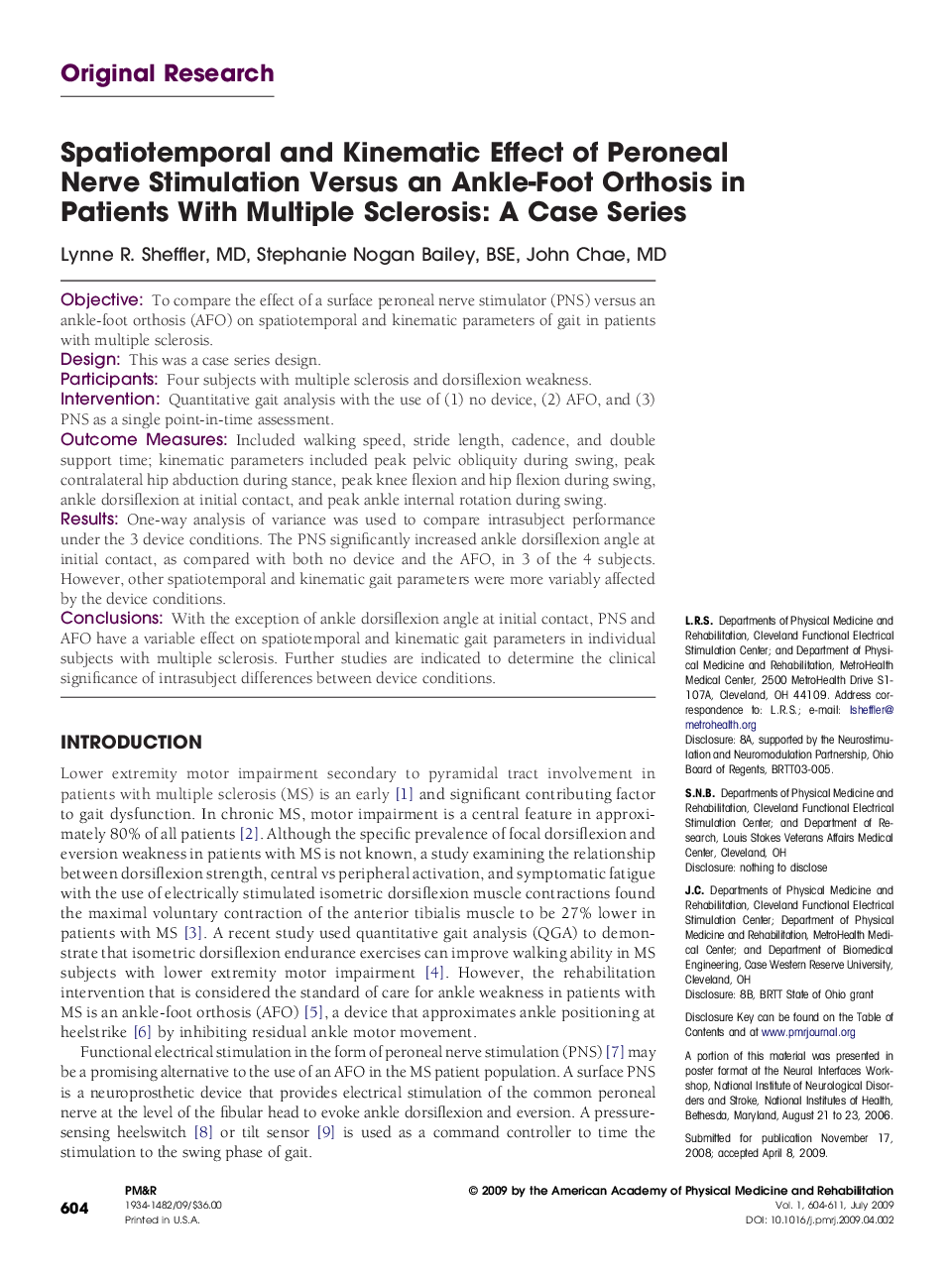| Article ID | Journal | Published Year | Pages | File Type |
|---|---|---|---|---|
| 2712946 | PM&R | 2009 | 8 Pages |
ObjectiveTo compare the effect of a surface peroneal nerve stimulator (PNS) versus an ankle-foot orthosis (AFO) on spatiotemporal and kinematic parameters of gait in patients with multiple sclerosis.DesignThis was a case series design.ParticipantsFour subjects with multiple sclerosis and dorsiflexion weakness.InterventionQuantitative gait analysis with the use of (1) no device, (2) AFO, and (3) PNS as a single point-in-time assessment.Outcome MeasuresIncluded walking speed, stride length, cadence, and double support time; kinematic parameters included peak pelvic obliquity during swing, peak contralateral hip abduction during stance, peak knee flexion and hip flexion during swing, ankle dorsiflexion at initial contact, and peak ankle internal rotation during swing.ResultsOne-way analysis of variance was used to compare intrasubject performance under the 3 device conditions. The PNS significantly increased ankle dorsiflexion angle at initial contact, as compared with both no device and the AFO, in 3 of the 4 subjects. However, other spatiotemporal and kinematic gait parameters were more variably affected by the device conditions.ConclusionsWith the exception of ankle dorsiflexion angle at initial contact, PNS and AFO have a variable effect on spatiotemporal and kinematic gait parameters in individual subjects with multiple sclerosis. Further studies are indicated to determine the clinical significance of intrasubject differences between device conditions.
